- Products & Solutions
- Wireless InSite
- Engineered Electromagnetic Surfaces (EES)
Engineered Electromagnetic Surfaces (EES)
Wireless InSite supports the simulation of RF interactions with engineered electromagnetic surfaces (EES). This allows modeling of passive metasurfaces designed to optimize wireless communication coverage by manipulating how signals propagate through a scene.
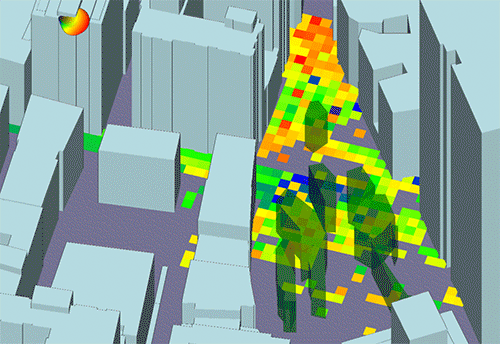
The ability to control the EM propagation environment is an important area of 6G research. Applications such as reconfigurable intelligent surfaces (RIS) rely on either metasurfaces or reflect arrays, an alternative technology, to optimize wireless channels. Engineered electromagnetic surfaces (EES) are a class of passive metasurfaces that artificially enhance wireless coverage at microwave and millimeter-wave frequencies via printed conductive patterns on substrates such as plastic or glass. When placed on a wall, window, or other structure, the scattering properties of these printed patterns redirect RF wave propagation in specific directions to augment wireless connectivity. Wireless InSite’s EES capability provides a way to analyze improvements to coverage from either a static EES or a single configuration of a metasurface-based RIS.
Wireless InSite’s EES capability is based on the Ray-Optical EES Scattering model developed by the Communications Research Centre Canada (CRC), part of Innovation, Science and Economic Development Canada. The implementation of the model within Wireless InSite’s ray-tracing and EM path processing calculations enables the prediction of reflections, transmissions, and diffractions that interact with EES placed within office buildings and urban areas.

EES Metasurface Materials
An EES is constructed by printing conductive, dielectric, and/or ferromagnetic ink on a substrate such as plastic or glass. These printed periodic patterns cause incident electromagnetic fields to reflect, transmit, and/or diffract in desired directions that do not necessarily obey the conventional geometrical constraints (i.e., Snell’s law and the Keller’s cone). In Wireless InSite, the EES material properties are represented by an array of phase gradients.
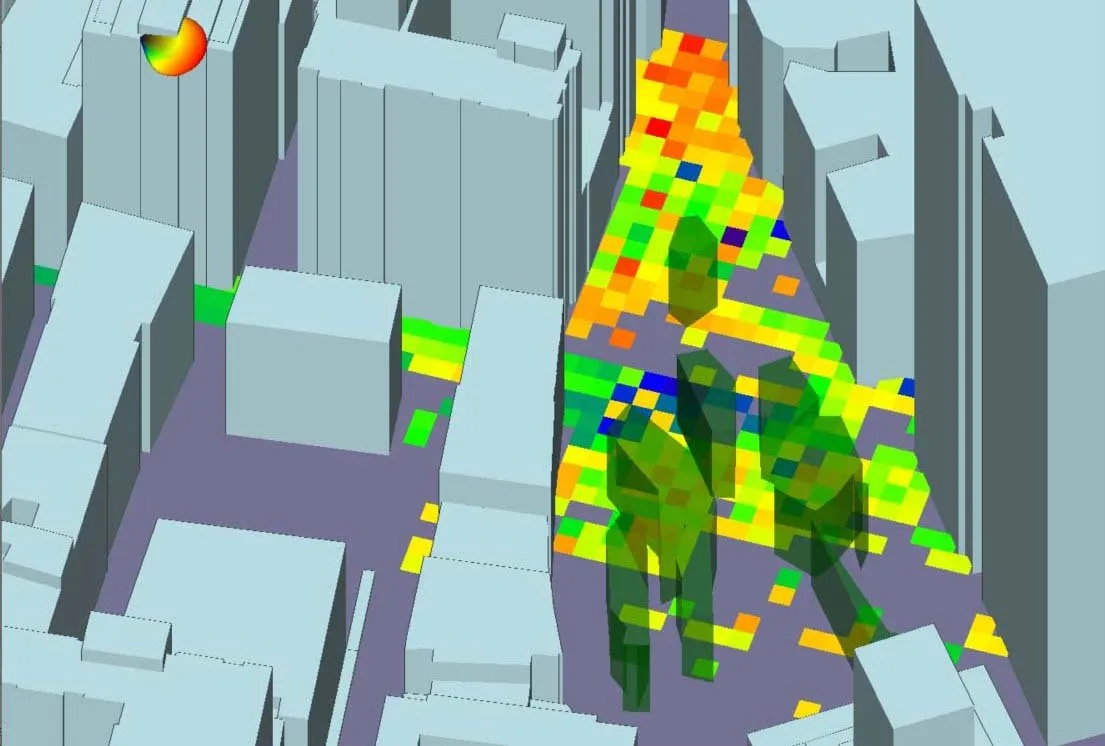
Outdoor scene without EES has poor coverage.
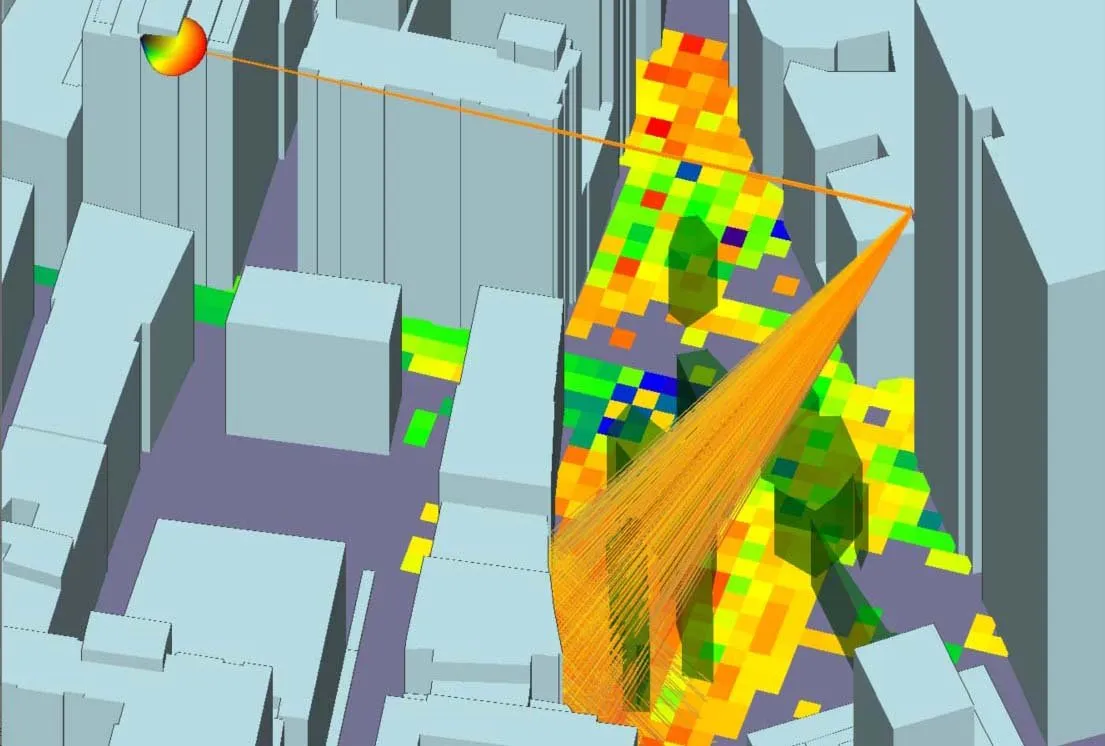
Outdoor scene with improved coverage achieved by placing EES diffuser at the corner of a building. Rays are angled downward to reach areas that were previously dead zones.
Gratings
An EES grating is designed to have a periodic impedance structure such that waves that are incident from an expected direction will reflect and/or transmit at a desired outgoing angle. The model is flexible to allow designs to be based on arbitrary scattered field directions in the horizontal and/or vertical planes. In the example shown in the figure above, incident waves are scattered at an oblique downward angle, whereas in the example below, they are scattered in a mostly horizontal direction.
.webp?width=640&height=300&name=02_Specular(ITU).webp)
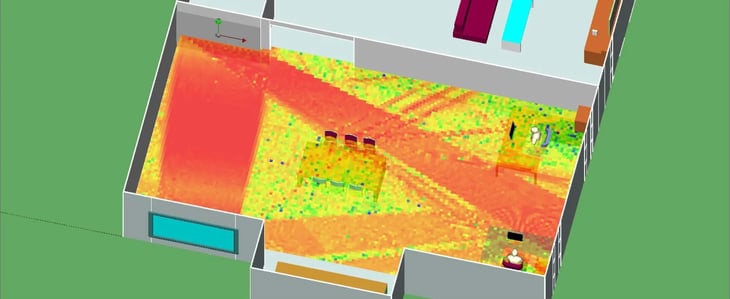
Without an EES present, waves enter the room and hit the back wall, remaining mostly on the
left side of the room.
A grating EES on the back wall redirects waves toward a specific corner of the room.
Diffusers
An EES diffuser is characterized by surface impedance structures whose spacing varies in such a way as to spread scattered waves over a range of desired outgoing angles. As with grating EES, scattered wave directions can be defined over arbitrary ranges of horizontal and vertical angles.
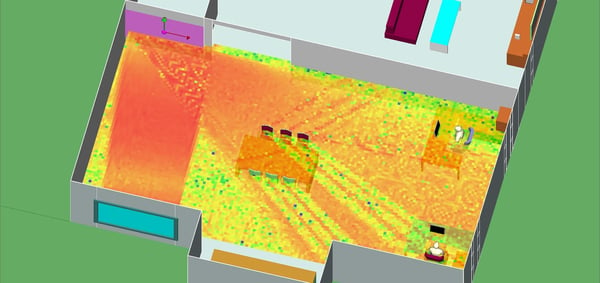
EES diffuser on the back wall redirects waves broadly toward the right side of the room.
Transmissible EES
EES diffusers and gratings can be defined to allow transmissions. As an example, an EES that allows transmissions can be used to model semi-transparent metasurfaces that could be applied to a window in order to redirect waves in a specific direction or over a range of angles as they propagate into a building from the outside.
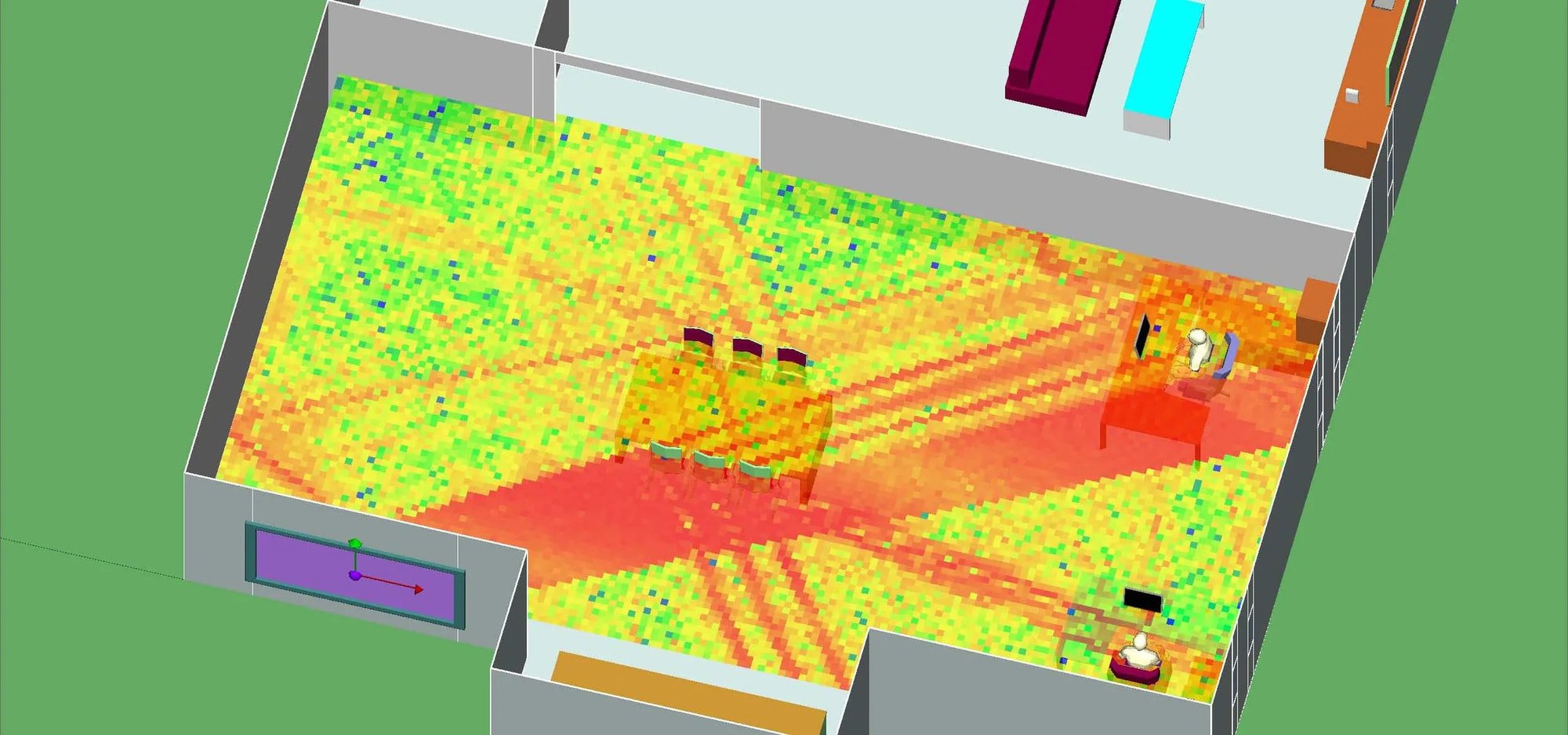
EES grating applied to the window redirects waves toward the back right corner.
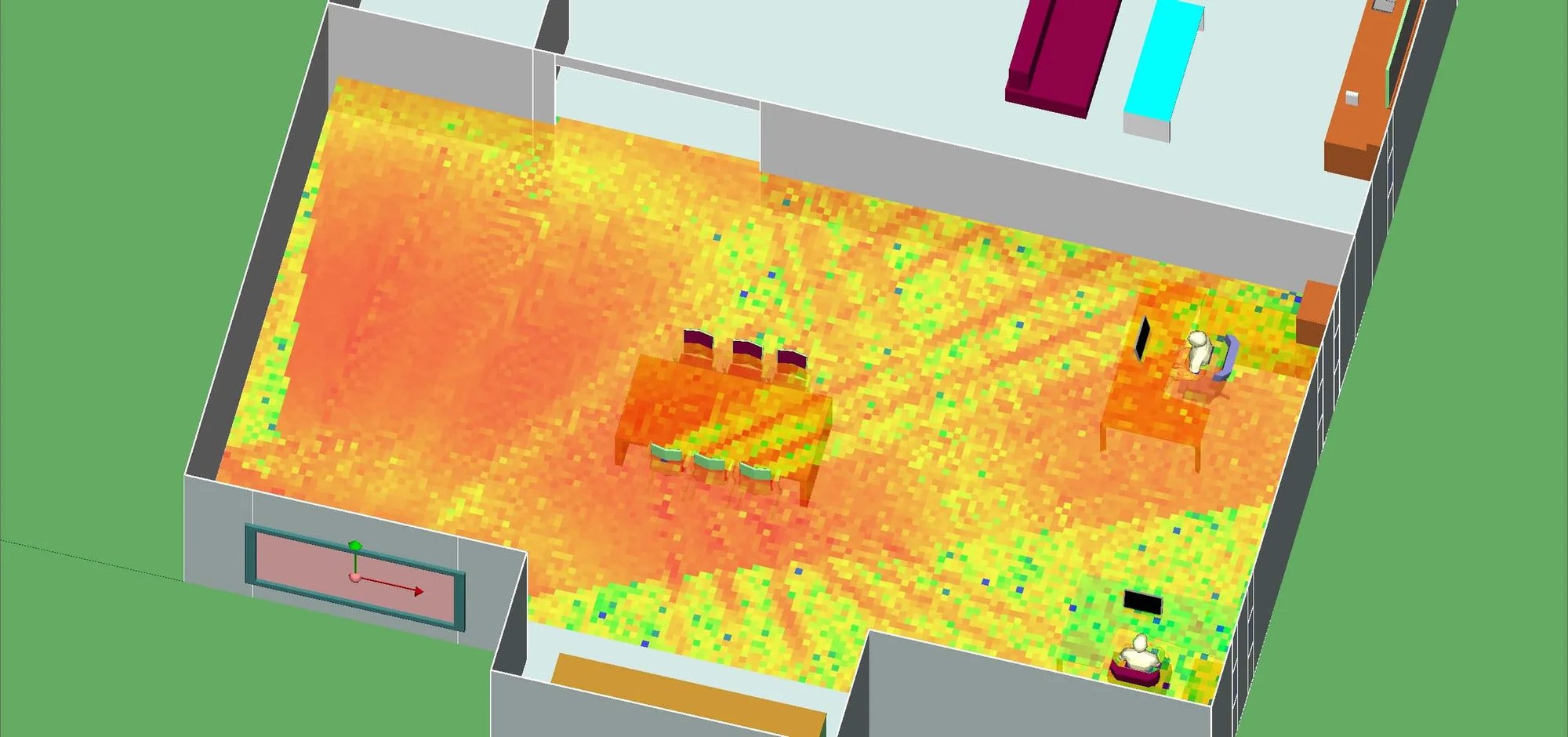
EES diffuser applied to the window spreads waves more broadly throughout the room.
More detailed descriptions of the model can be found in the following reference:
Y. L. C. de Jong, "Uniform Ray Description of Physical Optics Scattering by Finite Locally Periodic Metasurfaces," in IEEE Transactions on Antennas and Propagation, vol. 70, no. 4, pp. 2949-2959, April 2022, doi: 10.1109/TAP.2021.3137191.
Save time and reduce costs.
Contact Remcom today for a customized solution to your most complex electromagnetic challenges.
Request a Quote